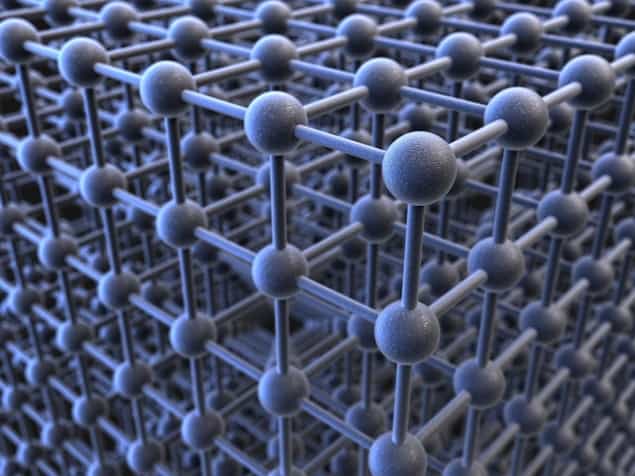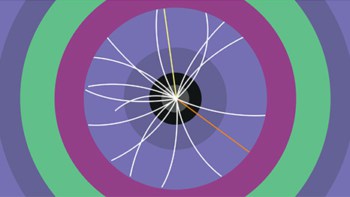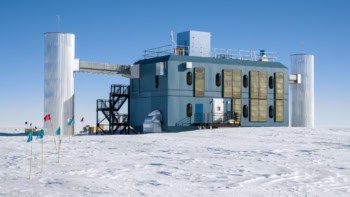
Iron nuclei can be made transparent to gamma rays that they would normally absorb using a new technique called “acoustically induced transparency” (AIT). This feat was achieved by physicists in the US and Russia, who vibrated an iron Mössbauer absorber using a piezoelectric transducer. The researchers believe the effect could help to control the emission of radiation from nuclei, allowing more accurate atomic clocks and other quantum optical devices to be created. The technique could even be used to slow the passage of gamma rays through a material.
The new effect is reminiscent of electromagnetically induced transparency (EIT), which involves light at much lower optical frequencies than gamma rays. In general, EIT is achieved by using light at one frequency to manipulate the electronic energy levels in an atom in a way that affects its ability to interact with light at another frequency. EIT has been used to produce spectrally pure light in lasers and frequency standards in atomic clocks. But perhaps the most spectacular use of EIT is to slow light to a temporary halt in a medium before letting it loose again.
Physicists would like push EIT to higher photon frequencies but this has proven very difficult because it involves using highly energetic electronic states that decay quickly and produce light at poorly defined photon frequencies. “It’s very difficult for an electron to stay in a highly excited state,” explains Olga Kocharovskaya of Texas A&M University. “It wants to go to the ground state, so there are many mechanisms for relaxation.”
Extremely sharp transitions
One potential solution lies in the use of the gamma rays emitted by atomic nuclei. “The nuclear transitions can be extremely sharp,” says Kocharovskaya, “Nuclei in the excited state may live for hundreds of years in principle – and these very narrow linewidth transitions are available even at room temperature.” However, she says there are also considerable challenges, “Nowadays there are no spectrally bright sources of gamma-ray photons, and there are no optical elements such as delay lines, switches, mirrors or lenses to manipulate and control these gamma-ray photons”.
Multiple research groups have tried to develop variations of EIT that work in the hard X-ray and gamma-ray regions of the spectrum. In 2012, for example, Ralf Röhlsberger and colleagues at DESY in Hamburg, Germany, placed two 2 nm thick layers of iron-57 inside a cavity supporting an X-ray standing wave. They were able to vary the iron’s absorption of incident 14.4 keV photons by a factor of four depending on whether they placed the first or second layer at the node of the standing wave. Nobody, however, has achieved near-complete transmission through an otherwise absorbent medium.
Now, the Texas A&M scientists and colleagues at the Institute of Applied Physics of the Russian Academy of Sciences in Nizhny Novgorod and Kazan Federal University have created AIT, which relies on conservation of momentum. Iron-57 has a nuclear transition at 14.4 keV, which means that the nucleus can absorb a photon at this energy and then re-emit it. However, when a nucleus absorbs a gamma-ray photon it must recoil slightly. Energy from the photon is required to drive this recoil, which means that the absorption must involve a photon with a slightly higher energy (frequency) than the nuclear excitation alone. The opposite occurs when a photon is emitted – the photon has a slightly lower energy than the excitation energy.
Mössbauer effect
If the nuclei are free to move, this energy mismatch means that a photon emitted from one iron-57 nucleus cannot be absorbed by another iron-57 nucleus. However, when the nuclei are bound in a solid lattice, the recoil is negligible and so absorption can occur. This phenomenon is called the Mössbauer effect and is widely used to study the properties of solids.
When nuclei in a solid oscillate back and forth – because the sample is being mechanically vibrated, or by sound wave or even thermal motion – the Doppler effect causes the absorption to be shifted to higher and lower frequencies. The result is a comb-like structure of discrete absorption lines centred on the absorption frequency. Intriguingly, however, under certain conditions, Kocharovskaya and colleagues calculated that central peak should vanish entirely, leading the material to be completely transparent to gamma rays at the absorption frequency.

Physicists create new slow-light technique
This was tested experimentally by Farit Vagizov both at Texas A&M University and the Kazan Federal University. He used 14.4 keV gamma-ray photons from the decay of excited iron-57 nuclei to the ground state. They used the same material to absorb the photons, mounting a film of iron on a vibrating piezoelectric transducer. They found that when they vibrated the absorber at the appropriate frequency, its absorption of 14.4 keV photons was suppressed by a factor of 148.
The iron-57 excited state has a lifetime of only 100 ns, but the researchers now intend to study longer-lived, less-studied excited states such as scandium-45, which has a lifetime of about 1 s. “During this time, the photon is stored in the excited state,” explains Kocharovskaya. This could potentially find applications in quantum memories and quantum communication.
Röhlsberger suspects the research will be “quite eyebrow raising”. “There are people in this field working with more sophisticated schemes. and this is remarkably simple and could have been discovered a long time ago,” he says. “It doesn’t require sophisticated instrumentation to set up, so – especially at modern synchrotron sources and X-ray lasers – I can imagine this could have impact, as you can effectively modulate the transmission from one to zero in thick samples.”
The research is described in Physical Review Letters.



